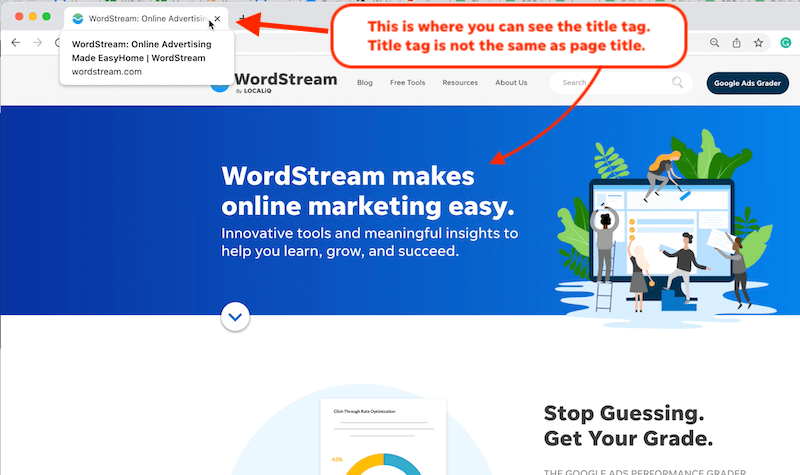Unveiling the Unconventional Mediums in Google Analytics Beyond Default Settings
In the world of digital analytics, Google Analytics stands as a keystone for organizations looking for to comprehend their on-line existence. By venturing past the surface and delving into the ins and outs of social media data, email project performance, recommendation traffic sources, direct web traffic patterns, and customized channel collections, a treasure chest of information waits for those eager to embrace an extra nuanced technique.

Leveraging Social Media Insights
Occasionally overlooked, yet greatly useful, is the practice of leveraging social media insights within the realm of Google Analytics. By integrating data from systems like Facebook, Twitter, Instagram, and LinkedIn right into Google Analytics, companies can get a much deeper understanding of their audience and the effectiveness of their social media sites campaigns.
With this combination, online marketers can analyze and track user habits on their site that stems from social networks platforms. They can determine which social media channels are driving the most traffic, which content is resonating with the target market, and which projects are transforming one of the most leads. This insight permits data-driven choices to maximize social media methods and boost total marketing efficiency.
Furthermore, by incorporating social media sites understandings with Google Analytics, companies can create a lot more targeted and customized campaigns - what is not considered a default medium in google analytics. They can make use of demographic details, rate of interests, and online habits gathered from social media sites to improve their target market segmentation and provide tailored messages that resonate with certain client groups. This targeted method can bring about higher engagement, raised conversions, and eventually, improved return on financial investment
Revealing Email Campaign Efficiency
Revealing Email Project Performance involves examining key metrics and efficiency signs to assess the effectiveness of email advertising efforts. When delving right into e-mail campaign efficiency, it is critical to assess metrics such as open rates, click-through rates, conversion rates, and unsubscribe prices. Open prices indicate the portion of recipients who opened up the e-mail, providing insight right into the performance of subject lines and sender names. Click-through prices gauge the portion of receivers that clicked web links within the email, revealing involvement levels. Conversion rates track the percent of recipients who finished a desired action after clicking on a web link in the e-mail, such as authorizing or making a purchase up for an e-newsletter. Finally, unsubscribe rates highlight the variety of recipients that pulled out of obtaining further e-mails, shedding light on e-mail material quality and importance. By analyzing these metrics, marketing experts can adjust their email advocate better involvement and performance.
Studying Referral Traffic Resources
After assessing the efficiency of email projects via crucial metrics such as open rates and conversion rates, the next crucial step is evaluating recommendation traffic sources in Google Analytics to recognize where site site visitors are originating from and exactly how they interact with the website. Reference web traffic resources refer to the sites that route users to your website through clickable links. By delving into this information, services can acquire understandings into which exterior systems are driving website traffic to their site, whether it be social networks platforms, partner web sites, or online directories.
Assessing recommendation website traffic can provide useful details see this website on the performance of external advertising and marketing initiatives and partnerships. It assists companies identify high-performing reference sources that contribute substantially to website web traffic and conversions. By understanding the actions of site visitors coming from various recommendation resources, services can customize their advertising strategies to maximize engagement and conversions. Google Analytics uses detailed records on recommendation traffic, enabling organizations to track the performance of each reference source properly and make data-driven decisions to enhance their on-line visibility.
Checking Out Straight Web Traffic Patterns
Discovering the direct web traffic patterns in Google Analytics provides important understandings into customer behavior and the performance of projects - what is not considered a default medium in google analytics. Direct website traffic refers to site visitors who come down on an internet site by straight inputting the URL into their browser, making use of book markings, or clicking on untagged links. Understanding straight traffic patterns can aid marketing experts assess the effect of offline advertising efforts, brand name recognition, and the performance of word-of-mouth referrals
By delving right into straight web traffic data, like it organizations can discover vital information regarding customer intent and brand loyalty. Evaluating the habits of straight visitors, such as the pages they check out, the time invested in website, and the conversion rate, can offer a much deeper understanding of customer engagement and the total performance of the internet site in transforming site visitors into customers.
Furthermore, tracking direct web traffic patterns in time allows companies to recognize patterns, seasonality impacts, and the success of details projects or promotions in driving straight brows through. This info can then be used to refine marketing methods, enhance internet site web content, and enhance the overall individual experience to take full advantage of conversions.
Utilizing Custom Network Groupings
Utilizing custom channel groupings in Google Analytics permits services to categorize and assess their website traffic based upon particular criteria, giving valuable insights for enhancing advertising techniques. Custom-made network groups make it possible for firms to produce their very own tailored collections of traffic resources, such as social media, organic search, email projects, and referral web traffic. By specifying these groupings, organizations can obtain a much deeper understanding of exactly how various advertising and marketing networks add to their internet site traffic and conversions.
This function is specifically useful for companies with varied advertising and you could check here marketing approaches across different platforms. A firm running both paid and organic social media campaigns can separate in between the 2 to assess their private efficiency accurately. In addition, customized network groupings can help identify any kind of forgotten or ignored website traffic sources that may be driving valuable interaction.
Verdict

By venturing past the surface area and delving into the intricacies of social media information, email campaign efficiency, reference traffic sources, direct web traffic patterns, and custom network groups, a prize chest of information awaits those willing to accept a more nuanced method. They can identify which social media networks are driving the most traffic, which content is reverberating with the audience, and which projects are converting the most leads.After evaluating the efficiency of e-mail campaigns through vital metrics such as open prices and conversion prices, the next essential step is assessing referral traffic sources in Google Analytics to comprehend where web site site visitors are coming from and just how they communicate with the website. Custom channel groupings allow business to produce their own personalized groups of web traffic sources, such as social media, natural search, e-mail projects, and recommendation web traffic. By leveraging social media insights, discovering e-mail project efficiency, assessing reference web traffic sources, checking out straight website traffic patterns, and using customized channel groupings, marketing experts can acquire useful insights into their online presence.